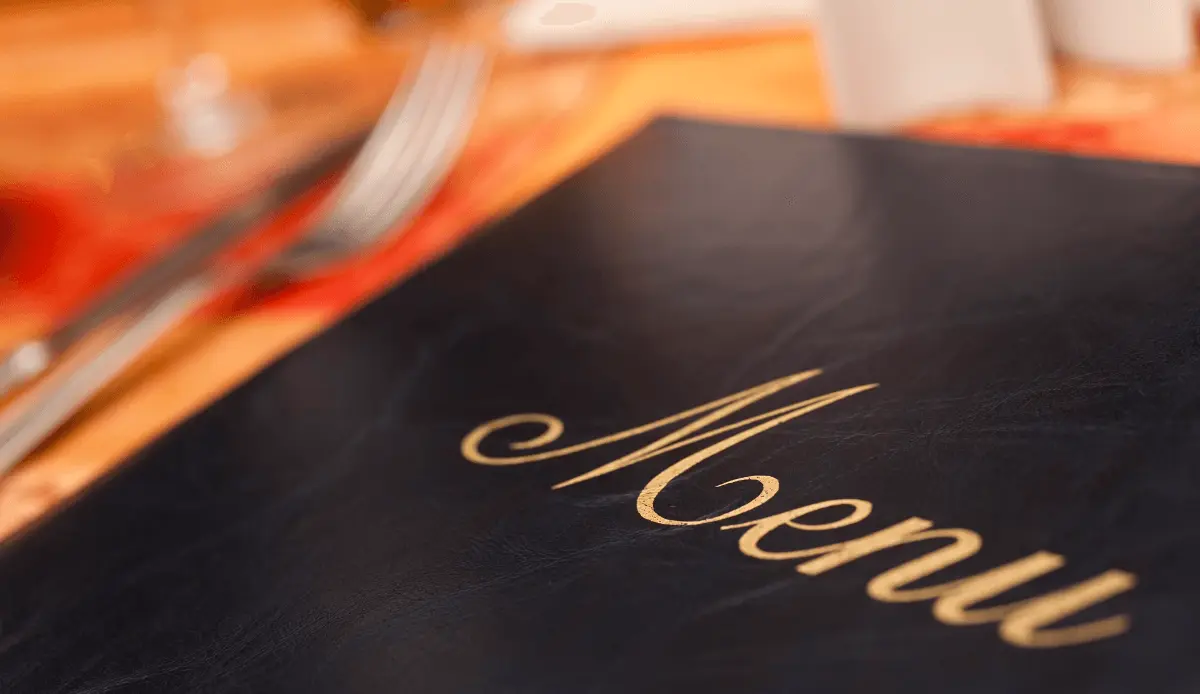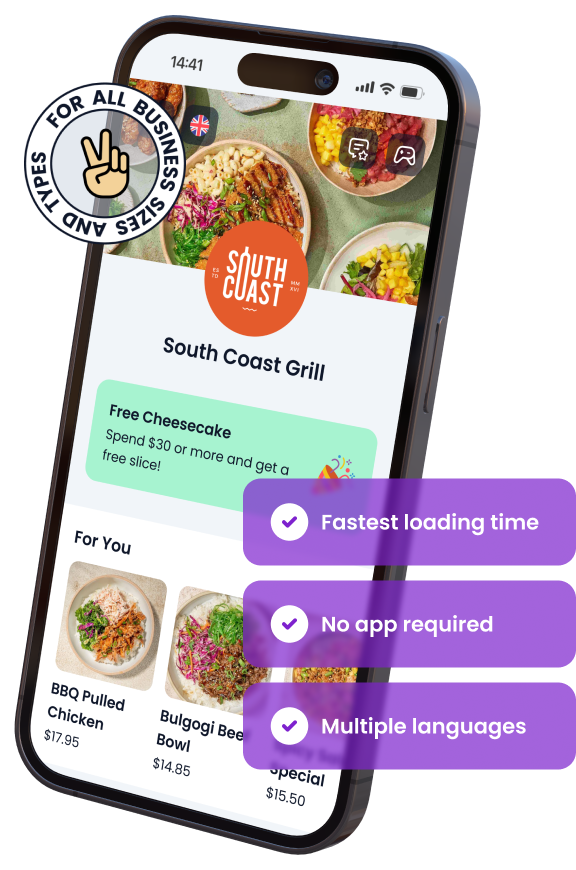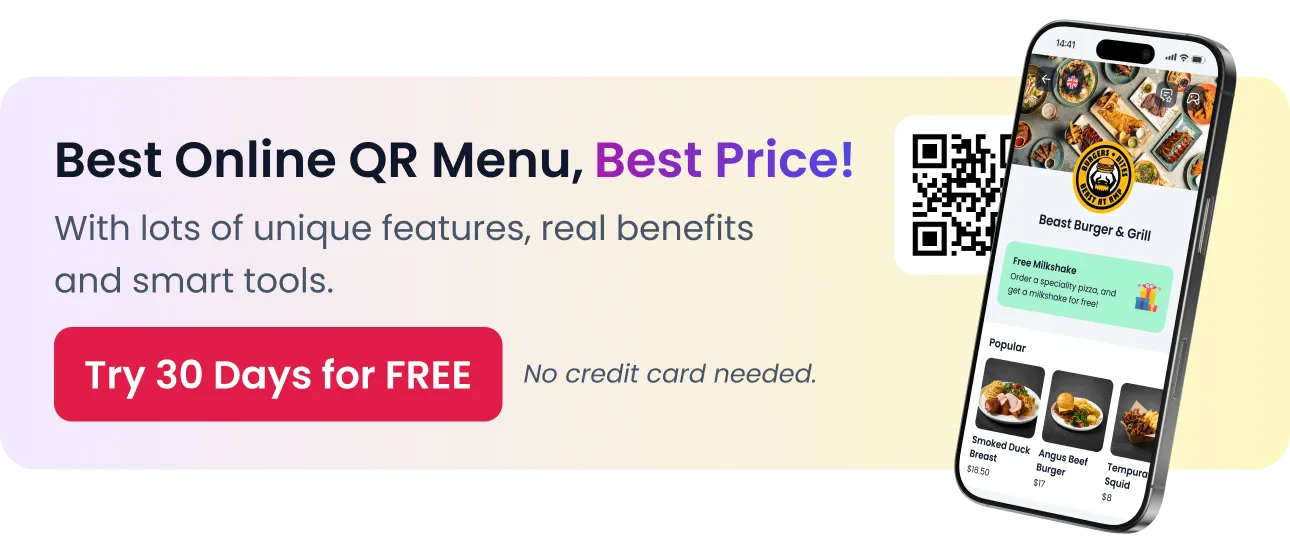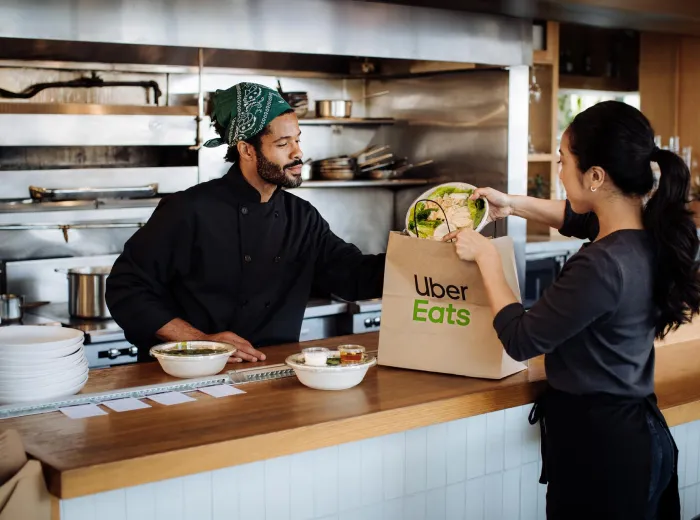

What Is Menu Engineering? Key to Restaurant Profitability
Menu engineering is a strategic tool that has quietly become one of the most powerful ways to increase profitability in the restaurant industry. By combining data analysis with psychological insights, menu engineering helps restaurateurs craft menus that not only appeal to customers but also maximize profit margins. This isn’t just about making the menu look pretty—it’s a science-driven approach to making informed decisions about which dishes deserve the spotlight and how they should be presented to drive sales.
For restaurant owners, understanding the financial and psychological impact of their menu design can be the difference between staying afloat and thriving in a highly competitive industry. Menu engineering goes beyond traditional pricing strategies by analyzing the popularity and profitability of each dish. By aligning what sells best with what yields the highest returns, restaurants can dramatically improve their bottom line without sacrificing customer satisfaction.
Whether you run a fast-casual spot or a fine dining establishment, the principles of menu engineering can be tailored to fit your concept. From reducing food waste to increasing kitchen efficiency, menu engineering offers practical, measurable benefits that impact every part of your business.
Would you like to listen our deep-dive conversation about this article?
What is Menu Engineering?
Menu engineering is the systematic process of evaluating and optimizing a restaurant’s menu to maximize profitability while enhancing customer satisfaction. By analyzing the performance of each menu item, restaurant owners can make data-driven decisions about pricing, placement, and even the inclusion of certain dishes. The goal is to highlight high-margin items while strategically positioning others to boost overall sales.
Definition of Menu Engineering
Menu engineering can be defined as the practice of designing a restaurant menu using data to balance customer preferences with business profitability. It involves:
- Assessing the profitability and popularity of each item.
- Organizing the menu layout to encourage high-margin choices.
- Applying psychological techniques, such as item placement and pricing strategies, to influence purchasing behavior.
The Role of Menu Engineering in Restaurant Success
Menu engineering plays a pivotal role in shaping a restaurant’s financial health. It allows owners to:
- Identify which dishes contribute most to profits.
- Refine pricing strategies to balance value with profitability.
- Optimize the menu to reduce operational costs, such as food waste or inefficiencies in preparation.
By aligning a menu’s design with the goals of profitability and customer experience, menu engineering becomes a powerful tool for sustained business success.
Why Menu Engineering is Essential for Profitability
Many restaurant owners underestimate the financial impact of an optimized menu. However, by using menu engineering, restaurants can:
- Increase average check size by positioning high-profit items more prominently.
- Eliminate or reformulate low-profit, low-popularity items to reduce food waste.
- Balance customer satisfaction with operational goals, ensuring that customers feel they are receiving value while the restaurant maximizes profit margins.
Ultimately, menu engineering is about finding the perfect balance between pleasing customers and optimizing profits—a crucial element for any successful restaurant.
The Core Principles of Menu Engineering
The foundation of menu engineering is built on several core principles that guide restaurant owners in making data-driven decisions about their menus. By understanding the delicate balance between profitability and popularity, as well as the psychological factors that influence customer choices, you can craft a menu that maximizes both satisfaction and revenue.
Understanding Food Cost vs. Contribution Margin
The first principle of menu engineering is recognizing the difference between food cost and contribution margin. While food cost refers to the direct expense of producing a dish, the contribution margin measures how much profit the dish generates after covering its costs. Items with a higher contribution margin are ideal for boosting overall profitability. To apply this principle:
- Calculate food cost for each dish: Determine how much it costs to prepare each menu item, including ingredients and preparation time.
- Identify the contribution margin: Subtract the food cost from the selling price to understand the profit each item generates.
- Balance food cost with selling price: Ensure the price aligns with both customer expectations and profitability goals.
Mastering the relationship between food cost and contribution margin helps prioritize menu items that contribute more significantly to the restaurant’s bottom line.
Menu Psychology: Influence Customer Behavior
Menu psychology focuses on how customers interact with the menu and how visual cues can guide their choices. Subtle design elements can significantly impact what customers order. Important factors include:
- Visual hierarchy: Use fonts, bold text, and colors to draw attention to high-margin items.
- Item placement: Place your most profitable dishes in “prime real estate” on the menu, such as the top-right corner or at the beginning of each category.
- Pricing strategies: Avoid pricing items in round numbers like “$10.00”; instead, use “$9.95” to create a sense of value.
Applying menu psychology ensures that customers are nudged toward ordering items that are more profitable for the restaurant.
Identifying Popularity vs. Profitability of Menu Items
Every menu item has its own level of popularity and profitability. To truly optimize your menu, it’s crucial to classify items based on these two dimensions. Here’s how to break them down:
- Stars: High profitability and high popularity. These items should be featured prominently.
- Plow Horses: Low profitability but high popularity. Consider raising the price or reducing costs.
- Puzzles: High profitability but low popularity. Try rebranding or repositioning these items.
- Dogs: Low profitability and low popularity. These items should either be removed or reworked.
Classifying your menu items allows you to focus on the dishes that bring in both revenue and customer satisfaction, while eliminating those that don’t serve either goal effectively.
By focusing on these core principles, restaurant owners can design a menu that doesn’t just cater to customer tastes but also drives the business’s profitability in a sustainable and strategic way.
How to Perform Menu Engineering Step by Step
Menu engineering is a systematic process that requires careful analysis, creativity, and ongoing adjustments. By following a structured approach, restaurant owners can optimize their menus to highlight high-margin items and improve overall profitability. Below is a step-by-step guide to performing menu engineering.
Conducting a Menu Item Analysis
The first step in menu engineering is to gather data on every item currently on your menu. This analysis will help you understand which dishes are most profitable and popular. Key actions include:
- Collect sales data: Track the sales volume of each menu item over a set period.
- Calculate food costs: Determine the cost of ingredients for each dish to assess profitability.
- Analyze contribution margins: Subtract food costs from the menu price to find out how much profit each item generates.
This analysis gives you the foundational data you need to categorize your menu items effectively.
Categorizing Menu Items by Performance
Once you have collected the necessary data, the next step is to categorize your menu items based on their popularity and profitability. This process involves:
- Calculate item popularity: Use sales data to determine the popularity of each dish.
- Determine item profitability: Measure how much profit each dish generates using contribution margins.
- Classify dishes into four categories:
- Stars: High popularity, high profitability.
- Plow Horses: High popularity, low profitability.
- Puzzles: Low popularity, high profitability.
- Dogs: Low popularity, low profitability.
Categorizing your menu in this way helps you make informed decisions about how to feature or adjust each item.
Redesigning Your Menu Based on Data
With your menu items categorized, you can now focus on redesigning the layout to highlight the most profitable and popular items. Key considerations include:
- Feature “Stars”: Place your star items in prominent locations on the menu (e.g., top-right corner or first in a category).
- Enhance “Puzzles”: Rebrand or reposition puzzle items with new descriptions or combinations to boost their appeal.
- Reevaluate “Plow Horses”: Consider small price increases or adjust portion sizes to improve profitability.
- Remove or rework “Dogs”: Either remove low-performing items from the menu or find ways to reduce their food costs.
A data-driven menu redesign ensures that your most profitable items are getting the attention they deserve.
Pricing Strategies for Maximizing Profits
Pricing is one of the most crucial aspects of menu engineering. Small changes in pricing can lead to significant gains in profitability. Techniques to consider include:
- Psychological pricing: Use prices ending in “.95” or “.99” to create the perception of better value.
- Price anchoring: Place a higher-priced item at the top of a category to make other dishes appear more affordable by comparison.
- Bundling items: Offer combo deals that increase the average check size while promoting high-margin items.
These pricing strategies not only increase profit margins but also make customers feel like they are getting a better deal.
Visual Design Tips for an Effective Menu
The layout and design of your menu can greatly influence customer decisions. A well-designed menu steers attention to high-margin items without overwhelming the customer. Design tips include:
- Use visual hierarchy: Bold fonts and larger text can draw attention to key items.
- Minimize clutter: Avoid too many images or excessive descriptions that distract from the important choices.
- Strategic use of boxes or highlights: Place a box or highlight around “star” items to make them stand out.
A visually appealing and easy-to-read menu enhances the customer experience while driving sales of your most profitable dishes.
By following these steps, restaurant owners can use menu engineering to refine their offerings, improve the dining experience, and boost profitability in a structured, measurable way.
Menu Engineering Tools and Software
In today’s technology-driven world, there are numerous tools and software available that can simplify and enhance the menu engineering process. These tools provide valuable insights by automating data collection, analyzing menu performance, and offering recommendations for improvements. Implementing the right software can save time, reduce errors, and help restaurant owners make more informed decisions about their menus.
Popular Menu Engineering Tools
There are several well-known menu engineering tools designed to help restaurants optimize their menus. Some of the most popular options include:
- Menuviel: A comprehensive tool offering pre-made dietary and allergen badges, making it easy to assign them to menu items while providing valuable analytics on item performance.
- PlateIQ: A tool focused on tracking food costs and identifying profitability trends. It helps restaurant owners control expenses and adjust pricing accordingly.
- Optimum Control: Known for its ability to integrate with point-of-sale (POS) systems, Optimum Control offers detailed reports on menu item performance, helping you to identify stars, puzzles, and dogs.
- Upserve by Lightspeed: This all-in-one solution provides real-time analytics on menu sales and customer preferences, allowing you to make data-driven decisions quickly.
Using these tools can help streamline the process of analyzing your menu and applying menu engineering strategies effectively.
How to Choose the Right Menu Engineering Software for Your Restaurant
Selecting the right software depends on your restaurant’s size, type, and specific needs. Here are key features to look for when choosing the right menu engineering tool:
- POS Integration: The software should seamlessly integrate with your existing POS system to automatically pull sales and cost data.
- Menu Analytics: Look for detailed reporting features that allow you to track the popularity, profitability, and performance of each dish.
- Cost Control Functions: The tool should help you monitor food costs and identify trends in ingredient prices.
- Customizable Menu Design Options: Some tools also offer design features that allow you to make adjustments to the visual layout of your menu.
- User-friendly Interface: Make sure the software is easy to use and doesn’t require extensive training for your staff to operate efficiently.
By focusing on these factors, you can choose a tool that not only fits your restaurant’s needs but also enhances your ability to optimize your menu for profitability.
Benefits of Automating the Menu Engineering Process
Using software to automate the menu engineering process offers several advantages over traditional, manual methods. These benefits include:
- Time savings: Automated data collection and analysis save time, allowing you to focus on other aspects of restaurant management.
- Accuracy: Automation reduces the likelihood of human error, ensuring more accurate data on sales, food costs, and profit margins.
- Real-time insights: Many tools provide real-time data and reports, allowing you to make immediate adjustments to your menu based on current trends.
- Scalability: Whether you manage a single location or multiple establishments, software can scale with your operations, providing consistent menu insights across the board.
Automating menu engineering helps restaurant owners make faster, smarter decisions that can directly impact profitability and customer satisfaction.
Menu Engineering for Different Types of Restaurants
Menu engineering isn’t a one-size-fits-all approach. The type of restaurant you operate—whether it’s fast-casual, fine dining, a coffee shop, or a bar—greatly influences how you should apply menu engineering principles. Each type of establishment has unique customer preferences, operational needs, and profitability goals. Tailoring your menu engineering strategies to the specific type of restaurant can ensure that you’re maximizing both customer satisfaction and profits.
Fast Casual vs. Fine Dining: Customizing Your Approach
The strategies that work for a fast-casual restaurant may not be as effective in a fine dining setting. Here’s how to tailor your approach:
- Fast Casual: These restaurants typically have shorter menus with a focus on speed and convenience. Use menu engineering to:
- Highlight high-margin, quick-prep items like sandwiches, salads, or bowls.
- Implement combo deals or value meals to increase average check size.
- Use simple, clear descriptions that emphasize value, speed, and freshness.
- Fine Dining: Fine dining menus are often more extensive, with a focus on high-quality ingredients and presentation. Menu engineering here should:
- Emphasize premium, high-margin dishes such as signature entrees or chef’s specials.
- Use descriptive, elegant language to convey exclusivity and justify higher price points.
- Strategically place high-profit items in prominent positions (e.g., top-right corner) and use pricing tactics that focus on perceived value rather than discounts.
Tailoring your approach based on the dining experience ensures that your menu resonates with the target audience of your restaurant.
Menu Engineering for Cafes and Coffee Shops
Cafes and coffee shops have unique opportunities for menu engineering, particularly when it comes to maximizing profit on drinks and small, high-margin food items. Here’s how to engineer menus for these establishments:
- Highlight high-margin beverages: Specialty coffee drinks, teas, and smoothies typically have low food costs and high profit margins. Position these items prominently on your menu.
- Promote bakery and snack items: Upsell pastries, cookies, or small snacks that complement beverages, increasing the average ticket size without significantly raising costs.
- Create combo offers: Pair high-margin drinks with baked goods for an attractive combo deal that encourages customers to buy more.
In coffee shops, the key to profitability is to focus on maximizing the average spend per customer through well-placed, high-margin add-ons.
Menu Engineering for Bars: Maximizing Beverage Sales
Bars and pubs can benefit greatly from menu engineering by strategically positioning their drink offerings. Since beverages often have some of the highest profit margins in the food and beverage industry, focusing on the following elements can significantly boost sales:
- Focus on high-margin cocktails: Create signature cocktails with premium pricing, using visually appealing descriptions to attract attention.
- Highlight top-shelf liquor: Encourage customers to upgrade their drink choices by emphasizing premium liquor brands or offering “upsell” options like double shots or special mixers.
- Offer flights or tasting menus: Introduce beer or wine flights that encourage customers to try more than one option, boosting overall beverage sales while showcasing high-margin items.
For bars, the key is to make drinks—particularly high-margin cocktails and premium liquor—the focal point of the menu, using creative descriptions and visual appeal to draw customer attention.
By understanding the unique needs of different types of restaurants, you can customize your menu engineering strategies to enhance profitability while delivering an exceptional dining experience tailored to your customers.
Benefits of Menu Engineering Beyond Profit
While the primary goal of menu engineering is to enhance profitability, its benefits extend far beyond simply boosting the bottom line. A well-engineered menu can enhance the overall customer experience, improve operational efficiency, and even support sustainability initiatives. These broader benefits contribute to long-term success by creating a more efficient, customer-focused, and environmentally conscious business.
Enhancing Customer Experience Through Menu Design
An engineered menu not only increases profitability but also enhances the dining experience. When a menu is thoughtfully designed, it guides customers through their choices in a way that feels effortless and intuitive. Benefits include:
- Simplified decision-making: A well-organized menu makes it easier for customers to find what they want, reducing decision fatigue.
- Increased satisfaction: Highlighting high-quality, signature dishes or popular items ensures customers are more likely to choose meals they’ll enjoy, increasing their satisfaction.
- Improved perceived value: Strategic pricing and visual cues create a perception of value, making customers feel they’re getting a good deal, even when choosing higher-priced items.
By improving the customer experience, a well-engineered menu can help boost repeat visits and foster customer loyalty.
Streamlining Kitchen Operations with a Well-Engineered Menu
Another significant benefit of menu engineering is the positive impact it has on kitchen operations. By optimizing the menu, restaurants can simplify preparation and reduce the complexity of managing kitchen workflows. Key benefits include:
- Increased efficiency: Streamlining the number of menu items reduces the strain on kitchen staff, allowing for faster service and fewer mistakes.
- Better inventory management: A focused menu with fewer ingredients allows for more accurate ordering, reducing the likelihood of overstocking or running out of key ingredients.
- Reduced training time: With a simplified and well-structured menu, new kitchen staff can be trained more quickly and easily, ensuring consistent quality and performance.
Efficient kitchen operations translate to faster service, fewer errors, and lower operational costs, benefiting both the customer and the restaurant.
Reducing Food Waste and Increasing Sustainability
Menu engineering can also play a key role in promoting sustainability by reducing food waste and using resources more efficiently. Here’s how it can contribute to greener operations:
- Optimizing portion sizes: Analyzing customer behavior allows you to adjust portion sizes to minimize waste without sacrificing satisfaction.
- Focusing on high-demand items: By eliminating or reworking less popular items, restaurants can avoid over-ordering ingredients that may go unused, reducing spoilage.
- Sourcing local and seasonal ingredients: Menu engineering can help you design a menu that highlights seasonal or locally sourced ingredients, which are not only fresher but often more sustainable.
By aligning profitability goals with environmental responsibility, restaurants can reduce their ecological footprint while still delivering high-quality meals to customers.
Menu engineering is more than just a financial tool—it is a comprehensive strategy that enhances customer experience, improves operational efficiency, and promotes sustainability. These additional benefits create a stronger, more resilient business that’s prepared for long-term success.
Common Mistakes to Avoid in Menu Engineering
While menu engineering can significantly improve a restaurant’s profitability and customer satisfaction, it’s easy to fall into certain traps that can undermine its effectiveness. Avoiding these common mistakes will ensure that your menu is not only optimized for profit but also delivers a seamless customer experience and operational efficiency.
Overcomplicating the Menu
One of the most frequent mistakes is creating a menu that is too large or complex. A cluttered menu can confuse customers and overwhelm the kitchen. Here’s what to avoid:
- Too many items: Offering too many choices dilutes the focus of the menu, making it harder for customers to decide. It can also complicate kitchen operations and lead to inefficiencies.
- Unnecessary complexity: Avoid overloading the menu with items that require specialized ingredients or complex preparation, which can slow down service and increase food costs.
A well-engineered menu is streamlined and focused, offering enough variety to appeal to customers without overwhelming them or your kitchen.
Ignoring Data in Favor of Assumptions
Another mistake is relying on intuition or assumptions rather than actual data. Menu engineering is a data-driven process, and making decisions based on what you think customers want rather than what they actually order can be costly. Here’s how to avoid this:
- Rely on sales data: Use actual sales figures to determine the popularity and profitability of each item instead of assuming certain dishes are favorites.
- Track trends: Monitor trends in customer preferences and adjust your menu based on what the data reveals, rather than sticking to outdated menu concepts.
Data-driven decisions will ensure you’re focusing on what works, not on what you think should work.
Underestimating the Importance of Visual Design
The layout and design of your menu can have a significant impact on how customers make their choices. Many restaurant owners neglect the visual aspects of their menu, focusing solely on content or pricing. Key things to watch out for:
- Poor item placement: Failing to place high-margin items in strategic positions (like the top-right corner) can result in customers overlooking these profitable dishes.
- Cluttered design: Too many fonts, images, or colors can make the menu hard to read and distract from key items. Simplicity and elegance often yield better results.
- Lack of visual cues: Neglecting to use boxes, highlights, or other visual cues to draw attention to your most profitable dishes can lead to missed opportunities.
A well-designed menu not only looks good but also guides customers toward the choices that are most beneficial for the restaurant.
Failing to Regularly Update the Menu
Many restaurants make the mistake of engineering their menu once and then neglecting it for long periods. Customer preferences, food costs, and seasonal ingredients change over time, and your menu needs to reflect that. Here’s how to stay proactive:
- Review sales data frequently: Regularly analyze your sales and profitability to identify shifts in customer preferences or changes in ingredient costs.
- Seasonal updates: Rotate items based on seasonal availability and trends to keep your menu fresh and exciting.
- Regular redesigns: Even a minor redesign can refresh the menu and make it feel new, which can encourage customers to try different items.
Consistent updates keep your menu aligned with both customer demands and operational realities, ensuring that it remains effective and profitable over time.
Avoiding these common mistakes in menu engineering will ensure that your restaurant maximizes profits while delivering a smooth, satisfying customer experience. By staying focused on data, simplicity, and strategic design, you can avoid the pitfalls that many restaurant owners encounter.
How to Measure Success After Implementing Menu Engineering
Once you’ve applied menu engineering principles to optimize your restaurant’s offerings, it’s crucial to track the effectiveness of your efforts. Measuring the success of menu engineering is an ongoing process that involves analyzing key performance metrics, reviewing customer feedback, and making adjustments as needed. Below are the primary ways to assess whether your menu engineering strategy is delivering the desired results.
Tracking Key Performance Metrics (KPIs)
The most direct way to measure the success of your menu engineering efforts is by monitoring key performance indicators (KPIs) that provide insight into profitability and customer behavior. The most important KPIs to track include:
- Profit margin: Track how your menu changes affect the overall profit margin. This includes the contribution margin for each item and how they influence the restaurant’s bottom line.
- Food cost percentage: A successful menu engineering strategy should help you lower your food cost percentage by promoting high-margin items.
- Average check size: Monitoring the average spend per customer can reveal whether your menu engineering efforts are encouraging higher-value purchases.
- Sales mix: Keep an eye on the sales volume of your “star” items, which should ideally increase if you’ve successfully repositioned them to stand out on the menu.
These metrics will give you a quantifiable view of how well your menu changes are driving profitability.
Monitoring Customer Feedback and Behavior
In addition to financial data, customer feedback and behavior provide valuable insights into the effectiveness of your menu. Here’s how to gauge customer reactions:
- Survey customers: Use customer surveys or table-side feedback forms to gather information about how they perceive the menu. Are they noticing featured items? Do they find the menu easy to navigate?
- Observe ordering patterns: Monitor which items customers are ordering most frequently after the menu changes. Are they gravitating toward high-margin items as intended?
- Track online reviews: Pay attention to what customers are saying about your new menu on review sites like Yelp or Google Reviews. Positive mentions of the menu’s design or specific items indicate success.
Customer satisfaction is just as important as profitability, so balancing both is key to long-term success.
Adjusting Your Menu Over Time Based on Performance Data
Menu engineering isn’t a one-time effort—it requires continual refinement to maintain its effectiveness. Here’s how to keep your menu optimized:
- Quarterly or semi-annual reviews: Regularly review your sales data and KPIs to determine if further adjustments are needed. If a previously successful item’s popularity is waning, consider rebranding it or revising its placement on the menu.
- Adapting to seasonal trends: Incorporate seasonal ingredients or adjust portion sizes to align with customer preferences and reduce food waste during specific times of the year.
- Test new menu items: Use the principles of menu engineering to introduce and test new dishes. Carefully monitor their performance to see if they have the potential to become “stars” or need further refinement.
By continually reviewing and tweaking your menu based on performance data, you can ensure that it remains both profitable and aligned with customer expectations.
Setting Realistic Goals and Benchmarks
It’s important to set clear, realistic goals when measuring the success of menu engineering. Consider the following benchmarks:
- Short-term goals: Focus on improving metrics like average check size or the sales of high-margin items within the first three months of implementing changes.
- Long-term goals: Aim to steadily increase your overall profit margin and improve kitchen efficiency over six months to a year.
- Customer satisfaction targets: Set measurable goals for customer satisfaction, such as reducing the number of menu-related complaints or improving feedback scores on food quality and menu variety.
Setting benchmarks allows you to assess whether your menu engineering efforts are on track and gives you a roadmap for future improvements.
By regularly measuring and reviewing your menu’s performance using KPIs, customer feedback, and ongoing data analysis, you can ensure that your menu remains a powerful tool for driving profitability and customer satisfaction.
Is Menu Engineering Right for Your Restaurant?
Menu engineering can be a powerful tool for improving profitability and optimizing the customer experience, but it’s not a one-size-fits-all solution. Whether or not menu engineering is right for your restaurant depends on several factors, including your current menu’s performance, your operational goals, and your ability to gather and analyze data. Below are some key considerations to help you determine if implementing menu engineering is the right choice for your business.
Signs You Should Implement Menu Engineering
There are several indicators that suggest your restaurant could benefit from menu engineering. If any of the following signs apply to your establishment, it may be time to take a closer look at your menu:
- High food costs: If your food cost percentage is consistently higher than industry standards (typically between 25% and 35%), menu engineering can help you identify and promote high-margin items to improve profitability.
- Low profitability: If your restaurant is struggling with low profit margins despite strong sales, it could indicate that you are not featuring or pricing your most profitable items correctly.
- Too many menu items: A large and unfocused menu can overwhelm customers and burden kitchen operations. Menu engineering helps streamline your offerings, improving both customer experience and kitchen efficiency.
- Stale menu offerings: If you’ve noticed a drop in customer interest or repeat visits, it may be time to refresh and re-engineer your menu to better align with current trends and preferences.
- Inconsistent performance across menu items: If some dishes perform very well while others consistently lag, menu engineering can help you categorize items and make data-driven decisions on which to feature more prominently or phase out.
If your restaurant faces any of these challenges, menu engineering can provide the structure and strategy needed to address them.
How Often Should You Perform Menu Engineering?
Menu engineering is not a one-time task; it’s an ongoing process that should be revisited regularly to stay aligned with business goals and customer preferences. Here’s how often you should consider updating your menu:
- Quarterly reviews: Reviewing your menu every three months allows you to adjust based on sales data, seasonal ingredients, and shifting customer preferences. This frequency works well for fast-casual and mid-tier restaurants.
- Semi-annual updates: Fine dining establishments or restaurants with extensive, high-end menus may benefit from reviewing and updating their menu twice a year to ensure that it stays current without overwhelming the kitchen with frequent changes.
- Seasonal adjustments: Some restaurants, especially those that emphasize seasonal ingredients or farm-to-table concepts, may need to make adjustments more frequently—every few months—to reflect the availability of fresh, local products.
By regularly updating your menu, you ensure that it remains dynamic, appealing to customers, and profitable for your business.
Factors to Consider Before Implementing Menu Engineering
Before diving into menu engineering, it’s important to assess whether your restaurant has the resources and infrastructure to support it. Here are some factors to consider:
- Data availability: Do you have access to detailed sales and cost data for each menu item? Menu engineering relies heavily on data analysis, so you’ll need accurate and up-to-date information.
- Staff readiness: Menu engineering often involves changes in the kitchen, from food prep to portion control. Make sure your staff is trained and prepared to implement the adjustments efficiently.
- Customer base: Consider how your customer base might react to changes in the menu. Will they be open to price adjustments or new item placements, or are they highly attached to certain dishes?
- Investment in design: Re-engineering a menu often involves redesigning its layout, which may require investment in graphic design or printing. Make sure your budget can accommodate these costs.
By evaluating these factors, you can ensure that your restaurant is well-positioned to benefit from the menu engineering process.
Menu engineering can be a highly effective strategy for boosting profitability and improving customer experience, but it requires careful planning and ongoing effort. If your restaurant faces challenges with food costs, profitability, or customer satisfaction, implementing menu engineering could be the key to addressing those issues and achieving long-term success.
Menu engineering is a powerful tool that goes beyond simply organizing dishes on a menu—it’s a strategic approach that can transform a restaurant’s profitability and enhance the overall dining experience. By understanding the balance between food costs, contribution margins, and customer behavior, restaurant owners can make informed decisions that drive higher sales and streamline operations. Whether you’re a fast-casual cafe, a fine dining establishment, or a local bar, applying the principles of menu engineering can result in a more efficient, profitable, and customer-friendly menu. With the right tools, regular updates, and a data-driven mindset, menu engineering can be the key to long-term success in the competitive restaurant industry.
ABOUT THE AUTHOR
Erkin Coban
Your Customers Deserve The Best
And we got Menuviel for them.
The fastest and easy-to-use online QR menu with 12+ unique features. Choose Menuviel and elevate your service quality to the next level.
Use free for the first 30 days.

In This Article

Free AI Tools for Restaurants
TRY NOW ➜

Feature your must-try items for quick visibility
Pin your selected items to the top of your menu. Perfect for bestsellers, new arrivals, or chef’s picks.







